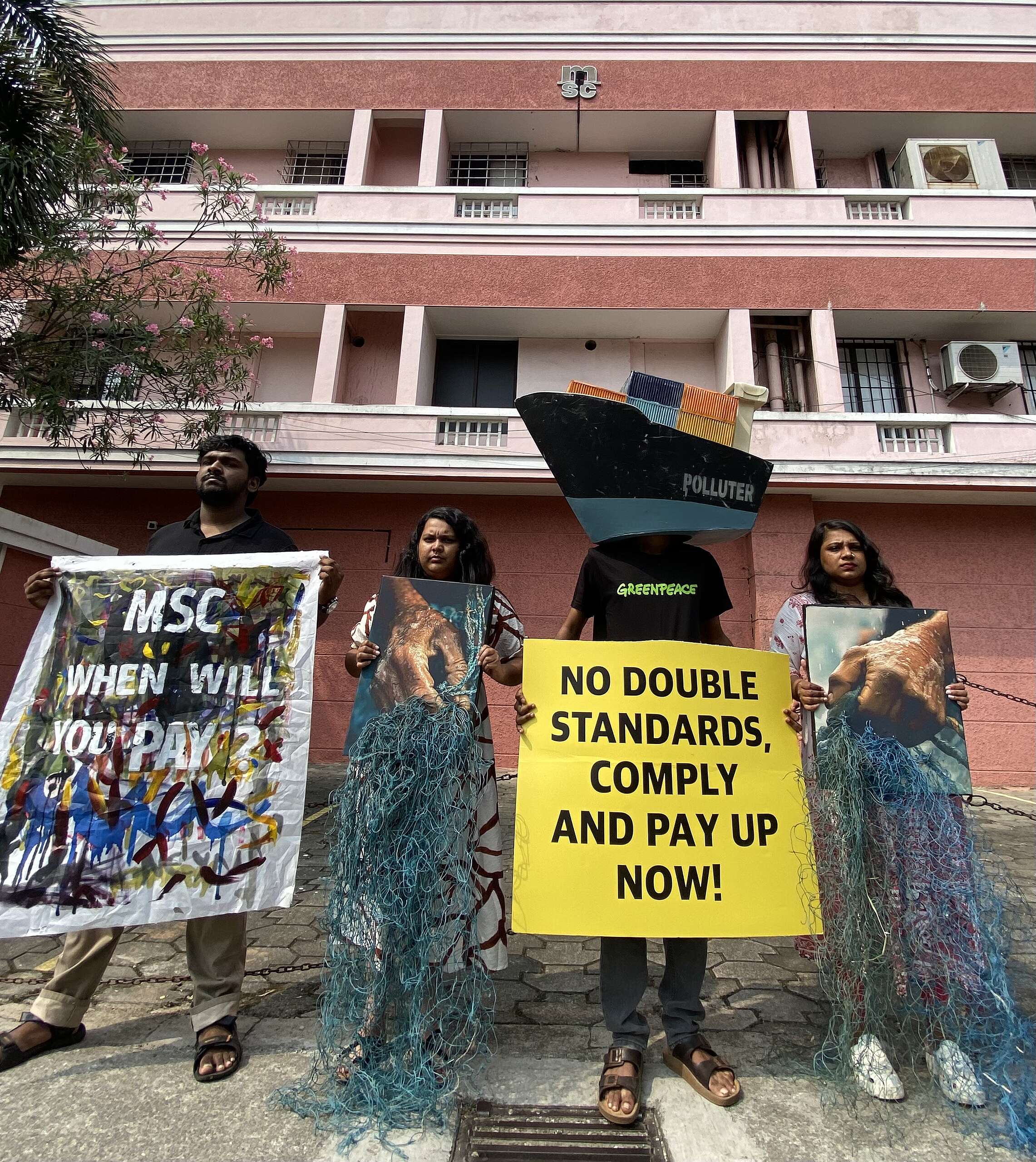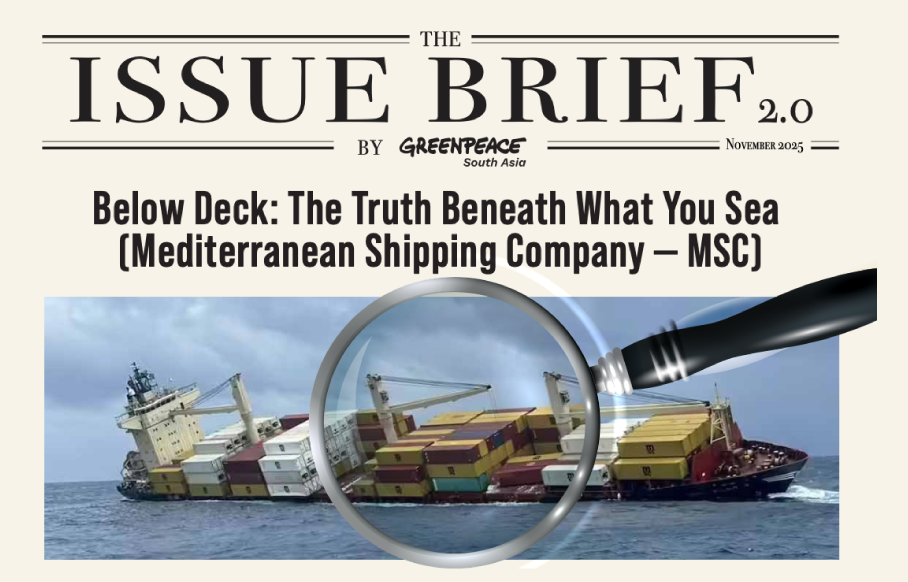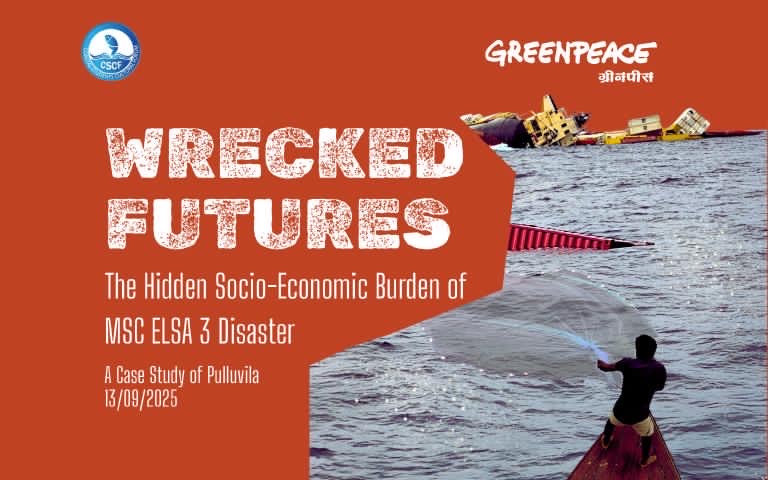In late May this year, the disaster involving the Liberian-flagged container ship MSC ELSA 3, located 14.6 nautical miles off the Thottappally Spillway in Kochi, Kerala, caused a complex situation, posing environmental risks and resulting in socioeconomic distress for the affected coastal communities. With a striking resemblance to the tragic X-Press Pearl disaster that wrecked the waterways of Sri Lanka only four years ago, it has also raised concerns for the coastal communities around India, highlighting the catastrophic effects of maritime disasters on marine ecosystems and livelihoods, as well as the urgent requirement for strong accountability and compensation mechanisms.
This container ship, MSC ELSA 3, carrying 640 containers, including many with hazardous substances, and from that, 12 containers specifically holding calcium carbide, sank off Kochi on May 25th, 4 years after the X-Press Pearl offshore Colombo. Since a significant amount of fuel, hazardous chemicals, and plastic pellets have spilled into the sea, it has triggered a high-alert response from the Indian Coast Guard due to fears of environmental contamination threatening the fragile marine ecosystem along Kerala’s southern coast.
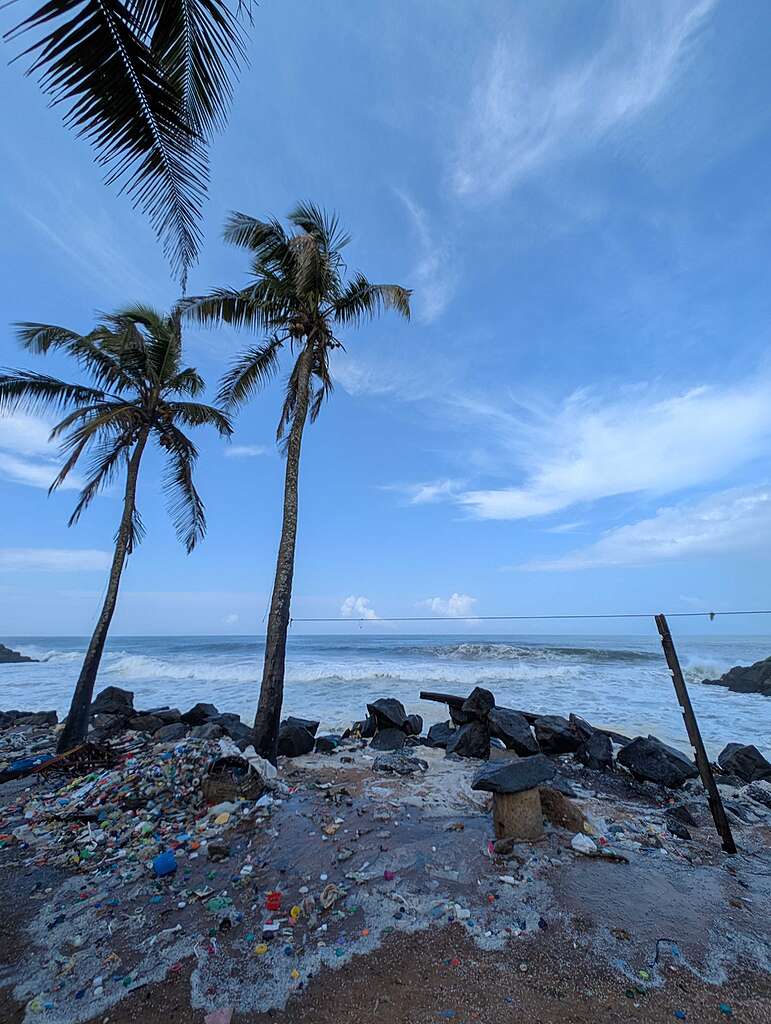
A twofold threat is posed by calcium carbide, which reacts strongly with water to form calcium hydroxide and a highly flammable acetylene gas. By changing pH levels, the subsequent increase of alkalinity in water can disturb aquatic life, which may have an impact on their well-being and survival. Also, the timing of this disaster is particularly distressing for Kerala fishermen, who already have financial difficulties due to the monsoon season and who are now facing a new fishing ban and the foreseeable decline of consumer trust in local seafood. There are concerns over the unknown nature of the cargo and the possible long-term impacts on the marine environment and fishing community as a whole.
Beyond this, the other significant threat emerged when the tonnes of plastic nurdles released from the sunken containers of the vessel started to appear on the beaches in Southern India, initially in Kerala, and later even 100 kilometers away in Kanyakumari and parts of Tamil Nadu. Further driven by the formidable Southwest Monsoon winds and ocean currents, nurdles were eventually driven onto the northern coastlines of Sri Lanka.
Field observations confirmed that there is a significant buildup of plastic pellets along the southern coast of Mannar, from Southbar to Olaithoduvai. The largest concentrations have been observed close to South Bar, indicating a recent landfall and a gradual spread.
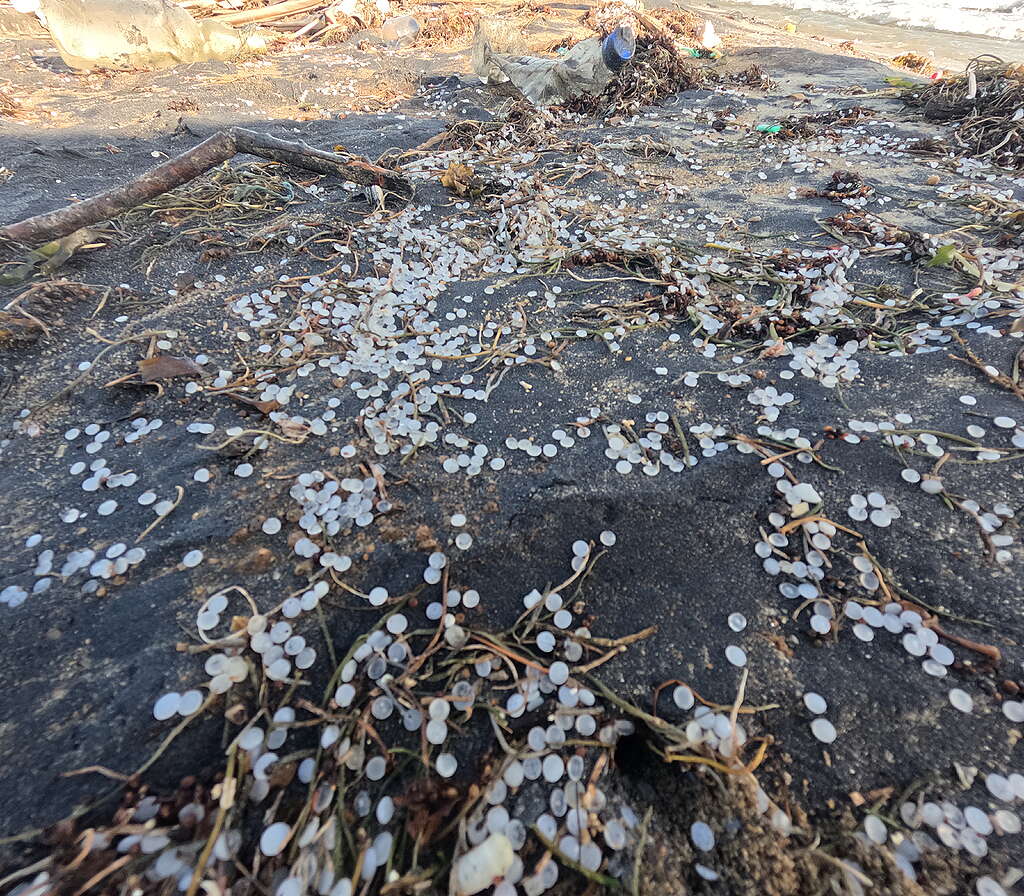
These nurdles are more destructive compared to other kinds of marine trash. They absorb toxic substances, and marine organisms mistake these nurdles for food, allowing them to persist in our environment for decades. Research into the aftermath of the X-Press Pearl disaster has revealed that months after the occurrence, nurdles were discovered in the guts of fish and inside shellfish, showing the long-term harm that this poses to marine biodiversity as well as human health.
This incident off Kochi is a grim reminder of the X-Press Pearl disaster, which happened off the coast of Sri Lanka on May 20, 2021, when a Singaporean-registered container ship caught fire and sank, releasing more than 100 billion plastic nurdles and dangerous cargo into the ocean. This also caused a fishing ban and a dramatic decline in local seafood consumption as a result of the extensive environmental damage. The wreckage contaminated coastal habitats, including beaches, coral reefs, and seagrass beds. Billions of nurdles polluted Sri Lankan beaches for months, resulting in extensive damage to the environment, disruption of fishing livelihoods, and the mass mortality of marine life, where 251 turtles, 28 dolphins, and 5 whales were found stranded along the SL coastline just two months after the incident. Even today, four years later, Sri Lankan fishing villages are still dealing with its effects and the struggle for fair compensation.
The parallels between these two tragedies, the MSC Elsa 3 and the X-Press Pearl disaster, revealed a shared vulnerability, one unfolding in India and the other still bearing long-lasting effects in Sri Lanka – from massive plastic nurdle spills.
As we speak, coastlines in Sri Lanka are facing a new chapter in the ongoing battle against marine plastic pollution as the tide of plastic nurdles rises once again. This situation serves as a grim reminder that transboundary marine pollution continues to pose challenges for island nations across South Asia.
The livelihoods of countless fishermen and women and the good health of our Indian Ocean are increasingly at risk due to these repeated assaults on the marine ecosystems of the region. Like the X-Press Pearl incident before, this ship sinking offshore Kochi highlights how the coastal communities keep bearing the brunt of these avoidable tragedies in the absence of comprehensive international frameworks for accountability, rapid response, and equitable compensation.
As Kerala is dealing with immediate challenges brought on by this tragedy, strengthening regional cooperation becomes critical in order to guarantee that the lessons learned from previous experiences are made into concrete action to prevent similar disasters in the future, for the protection of our shared ocean.

